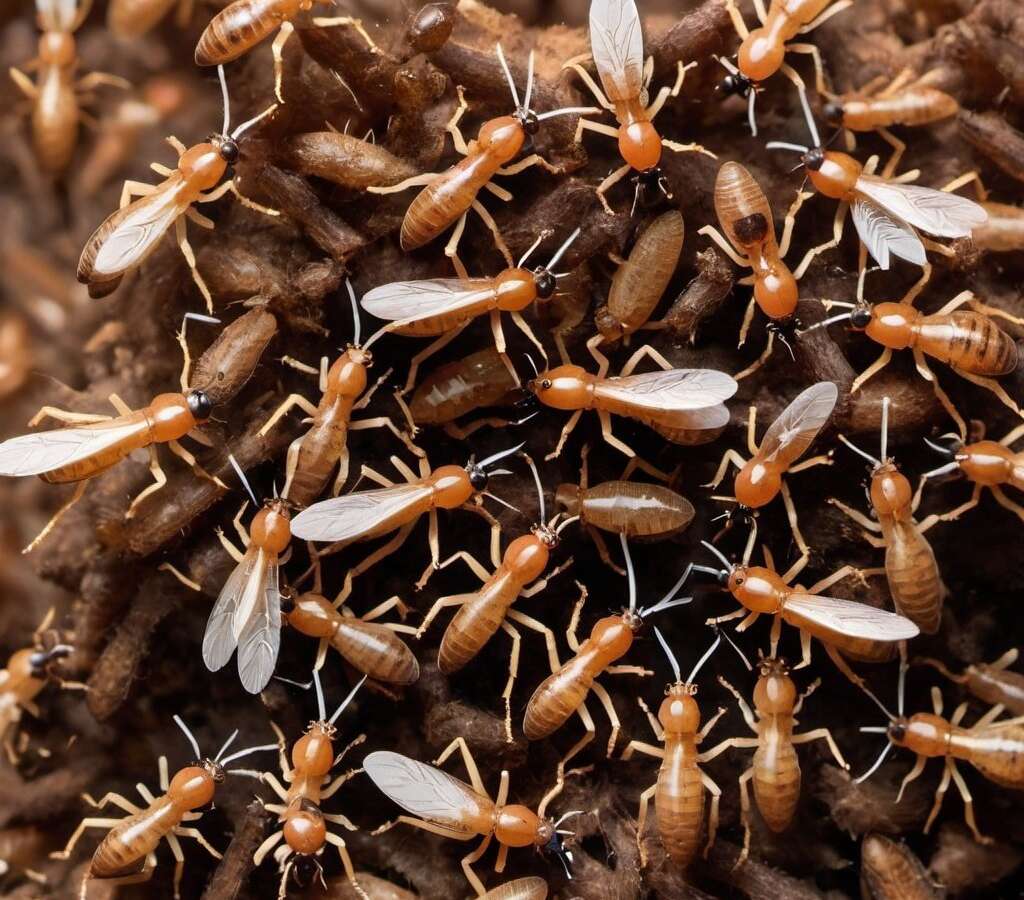Centipedes and millipedes are often confused with one another. These two insects are from different branches of the same tree, though. But in this article, we will explore how centipedes reproduce. The male creates a spermatophore and drops it on the ground for the female to pick up. Once she lays her eggs, she will lick them, distributing the male seed.
The centipede doesn’t actually go through any form of metamorphosis. The young are born as smaller versions of the adults called nymphs. These nymphs will go through several molts, or removal of the exterior skin. This is done because the insect outgrows the current exoskeleton, and must replace it with a new exoskeleton. Some species of centipede will add extra legs at every molt until adulthood.
THE COURTING RITUAL
The female centipede, when she is ready to reproduce, will release a pheromone, or hormonal scent, that will alert and attract the male centipedes. Once this happens, the male will make a spermatophore. This is a web packet that contains his seed. He will then do a dance to entice the female to pick up the packet. She will pick up the packet and then go and deposit her eggs. The female will then apply the sperm to the eggs by licking them.
Centipede females will lay her eggs in different locations, based on her specific species. She may make a hole in the ground, lay her eggs and then cover it. She may find a wet log to place her eggs in. The mother will stay with her eggs, protecting them and often grooming them by licking them. This keeps dangerous fungi from consuming the eggs. In some cases, once the nymphs are born, she may sacrifice herself and allow the little ones to eat her.
VARIATIONS
Not all centipedes mate exactly the same. Some centipedes reproduce via parthenogenesis. This is an asexual reproduction where all the insects are females. They simply lay eggs that are genetic copies of themselves. Only a few species are like this. There are some species that hatch as a larva and go through a pupal stage where they cocoon. Again, there are not a lot of species like this.
Some centipedes have a set of modified legs known as gonopods. These insects actually copulate and use these legs to transfer the sperm to the female during sex. The sperm is stored in a pore with a hood, then applied to the eggs after the female lays them. Some centipedes are born with three legs. These centipedes add a pair of legs at every molt.
CENTIPEDES… AS PETS?
Centipedes can get fairly large. There’s a variation in southern Europe that is around four inches long! Some of the larger ones are kept as exotic pets. Its important to make sure that the species of “pet” is compatible with humans. Centipedes are carnivorous by nature, and use a venomous bite to paralyze their prey. Some centipedes will bite humans.
The centipede bite is seldom fatal, but can be very painful. They use their maxillipeds to inject a venom into their prey. Maxillipeds are strong claws at the base of the mouth of the insect. Some species can cause excessive swelling and fever. If a person has an allergy to bee stings, the centipede bite can cause them to go into anaphylactic shock. Caution should be used in handling these insects.
If you’ve ever wondered how centipedes reproduce, hopefully this article has answered that question for you. When experiencing a problem in your home or business related to centipedes, contact a knowledgeable exterminator. If you live in the Tulsa, Owasso, Broken Arrow, Jenks, Sand Springs, Sapulpa or near by area, Contact Us here at TermMax Pest Control. We are here to help!


